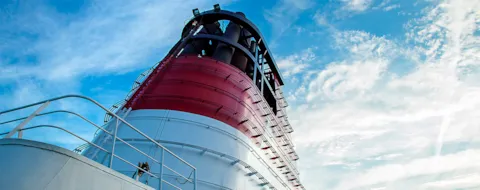The bunker fuel supply and availability landscape changed when the IMO’s regulation capping the global fuel sulphur limit at 0.50% was enforced from 1 January 2020. While the technological solutions are many, decisions are hard to take.
Following an availability review of compliant low-sulphur fuel oil in 2020, the IMO decided that the global fuel sulphur limit of 0.50% was to enter into force in 2020. This requirement is in addition to the 0.10% sulphur limit in the North American, US Caribbean, North Sea and Baltic Sulphur Emission Control Areas (SECAs). Vessels that have exhaust gas cleaning systems installed are still allowed to use high-sulphur fuel oil (HSFO).
New amendments ban high sulphur fuels without using scrubbers
A significant amendment to the regulation is the carriage ban for HSFO as of 1 March 2020, from which ships equipped with scrubbers are exempted. While it’s still permitted to carry HSFO as a cargo, it's no longer permitted to have HSFO in fuel tanks unless scrubbers are installed. This enables port state control (PSC) to detain ships carrying non-compliant fuel without having to determine if it has been used or not. Certain ports have banned the use of open-loop scrubbers within their areas. For an overview on local wash water restrictions, please see the map on the Alternative Fuel Insight (AFI) platform (Link)
Regional sulphur limits vary
The European Union Sulphur Directive stipulates a maximum of 0.10% sulphur content for ships in EU ports. In certain EU countries, the Water Framework Directive constrains the discharge of scrubber water. Belgium and Germany have prohibited the discharge of scrubber water in many areas, constraining the operation of open-loop scrubbers. Other EU countries may follow suit, with no common EU practice likely to be agreed.
In China, as of 1 January 2020 vessels operating in the Inland ECAs (Yangtze and Xijiang River) shall use fuel with a sulphur content not exceeding 0.10% sulphur. The same will apply within the Hainan Coastal ECA from 1 January 2022. In addition, discharging wastewater from scrubbers is banned within inland Emission Control Areas (ECAs), port waters and the Bohai Bay waters.
California’s Air Resources Board (ARB) enforces a 0.10% sulphur limit within 24 nautical miles of the California coast. The regulation does not allow any other compliance options than low-sulphur marine gas or diesel oil (DMA or DMB). A temporary research exemption may be granted, allowing the use of a scrubber. The application must be sent before entering California waters. After a formal review of the regulation, California legislators have decided to retain it as an addition to the ECA requirements. Both sets of regulations must be complied with when calling at port in California.
There is a general global trend of stricter local air pollution regulations coming into play.
On demand: Alternative Fuels Online Conference (15 Oct 2020)
Access 7 expert presentations and watch the video recordings
GUIDANCE PACKAGE: Global Sulphur Cap 2020
Download our guidance documents including scrubbers, fuel switch options, checklists and more
Technical and Regulatory News No. 09/2019
2020 Sulphur update - outcome of the MEPC 74
Technical and Regulatory News No. 26/2018
Update on emissions to air regulations for ships operating in Chinese coastal waters
Joint Industry Guidance on the supply and use of 0.50% - sulphur marine fuel
Download the 64-page paper at cimac.com
Alternative fuels and technologies
Topic page including emission categories, prices, availability and services
Alternative Fuels Insights platform
Explore the open platform for evaluating the uptake of alternative fuels and technologies
Video: 2020 sulphur update – MEPC 74 expert review
Watch our video about the 2020 sulphur update
